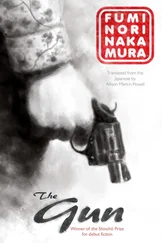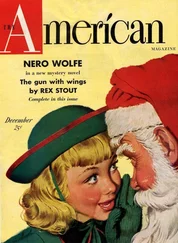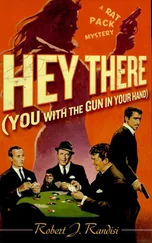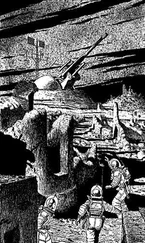Back in Washington, Representative Ichord’s subcommittee ground toward its conclusion. The army had stonewalled the congressmen in many ways as they held hearings and lobbed correspondence back and forth with the Pentagon. Important witnesses were never produced. (Colonel Hallock, the supervisor of Project AGILE who later proposed and enforced a cover-up, avoided scrutiny. On May 31, as complaints from Vietnam reached high pitch, he retired.) 83Many witnesses who did appear seemed to have been selected because they were not inclined to help understand the problems. The army produced a small stream of officers who insisted that the M-16 was excellent and dependable; those who had had the bad experiences under fire were kept away. Colonel Yount, who had been relieved of his duties by the army, did testify, but largely downplayed the scale of the problems and tried to assure the panel that solutions were well in place. The subcommittee emanated disgust. The congressmen understood viscerally that the M-16’s performance in Vietnam was much worse than the army acknowledged, and that the army had not remedied the weapon’s many early problems. On October 19 they published a scalding report. The report declared that the M-16’s malfunctions were “serious and excessive” and labeled the army and Marine Corps negligent for failing to provide adequate cleaning gear and weapons-cleaning instruction. It scolded the army for not properly notifying the Marine Corps of the documented problems with the M-16 while encouraging the Marines to carry it, too. On one matter, the report accused the army of criminal negligence: the agreement between Rock Island Arsenal and Colt’s to use cartridges packed with IMR powder for acceptance testing at the factory, knowing that the weapons would fire cartridges containing ball powder in Vietnam. 84Representative William G. Bray, a Republican from Indiana and a subcommittee member, called the collusion “one of the most incredible and inexcusable exercises in duplicity I have ever seen.” 85
Ichord’s subcommittee did not get everything right. Its emphasis on the IMR–ball powder controversy implicitly missed other causes of jamming, including problems related to corrosion. It attached little importance to chroming the bore and chamber. It did not examine the question of whether the ammunition cases were manufactured to a satisfactory standard, and whether their alloy was soft and prone to expansion and lodging snugly in the chamber when fired. But teasing out precise causes was difficult, especially in a short period of time and with the army unhelpful. [27] What really caused the jamming? Ichord emphasized ball powder, a factor that a subsequent writer, James Fallows, endorsed. Thomas L. McNaugher, in his rigorous 1984 study, The M16 Controversies: Military Organizations and Weapons Acquisition , emphasized maintenance and noted that by 1970 the rifle was widely considered reliable. The most likely cause for most of the reported problems, based on the records now available, and the accounts of veterans, would seem to be corrosion in the rifles’ chambers. This was caused in some cases by cleaning habits in the wet climate of Vietnam, but from a manufacturing perspective was related more strongly to the failure of the army and Colt’s to chrome-plate the chambers of all M-16s leaving Hartford until late in 1968. Another likely factor contributing to the failures to extract, though as far as is publicly known the army never conducted extensive tests of the cartridge cases from 1966 to 1968, was that the ammunition cases were too soft and expanded under the pressures of firing, lodging into pitting and tool marks in the chamber. The rifle’s inherently poor resistance to corrosion and insufficient ammunition standards likely combined to create the most intractable jams. Rifle cleaning habits were in all likelihood much less of a factor, considering that the same troops, when using M-14s in the same environments, reported few reliability problems. By 1970, when McNaugher noted that the M-16s in Vietnam were performing reliably, the many manufacturing changes meant that in many ways the troops were carrying a different rifle than what had been issued in 1966 and 1967.
The report did succeed in capturing the broader institutional failure: The M-16 had been developed and distributed through a weak and troubled system, a system in which officers and officials alike neglected basic duties.
The existing command structure was either inadequate or inoperative. The division of responsibility makes it almost impossible to pinpoint responsibility when mistakes are made. There is substantial evidence of lack of activity on the part of responsible officials of highest authority even when the problems of the M-16 and its ammunition came to their attention. It appears that under the present system problems are too slowly recognized and reactions to problems are even slower.
Twelve days after the release of Ichord’s report, on October 29, the Washington Post, the newspaper of the nation’s political class, published Lieutenant Chervenak’s letter. 86His words had an instant effect. The Marine Corps opened an investigation—not into the causes of the rifle’s failures or the slow reaction by the chain of command to troops’ complaints, but into the officer who dared to write to the Washington Post. General Greene personally called the battalion, looking for Lieutenant Chervenak. By chance the lieutenant was on a rest period in Japan. The brass could not find him. An investigating officer was assigned and canvassed Marines in the battalion, taking sworn statements. He could establish no real wrongdoing. Telling the truth was not legally forbidden, it was just discouraged to tell the truth this way. The offense was a matter of protocol, not of law. When Lieutenant Chervenak returned, the battalion executive officer presented him a letter of reprimand for failure to follow proper channels. 87Lieutenant Chervenak was unmoved. He listened politely. When the major handed the letter to him he did not bother to read it. He was not by nature a troublemaker. But he knew that given the same circumstances, he would do the same thing again.
The letter’s effects did not stop there. In the unwritten rules of the Beltway, the publication of Lieutenant Chervenak’s claims in the Washington Post gave them a heft that dozens of other claims did not have. 88The Marine Corps began facing facts it had ignored. On December 3, a pair of representatives from Colt’s and the Marine Corps caught up with the battalion at a base outside Da Nang. They had been ordered to follow up on the lieutenant’s allegations. Marines gathered in the theater for a presentation, at which the Marine Corps representative, a warrant officer, opened with the familiar lines. He told his audience that the M-16 was a good rifle and if it was failing it was because they were not cleaning it adequately. The Marines shouted and jeered. A near riot ensued. The battalion commander demanded order and quiet. The representative from Colt’s, Kanemitsu Ito, was so shaken he dared not take notes.
The warrant officer and Ito held their own technical inspection, and Marines filed by to show them their rifles. Ito was a war veteran himself, and a former test officer in the army’s ordnance service. He was small, lean, and muscular, a fastidious forty-seven-year-old man with a record of bravery who had roamed Vietnam for his employer, trying to understand why Colt’s rifles had performed so badly since at least 1966. He was conscientious to an almost excruciating degree. As the Marines filed past to show him rifles that had failed them, he worried that the troops might label him a profiteer as he and the warrant officer condemned pitted rifles. After all, he thought, every rifle to be replaced might be seen as another sale for Colt’s. He decided to let the warrant officer do most of the talking. Quietly, out of the center of attention, he watched. That night, emotionally and physically exhausted, Ito typed a letter and sent it back to Colt’s. He had important news to share. What Lieutenant Chervenak had written to the Washington Post was not quite right. Matters were actually much worse.
Читать дальше











